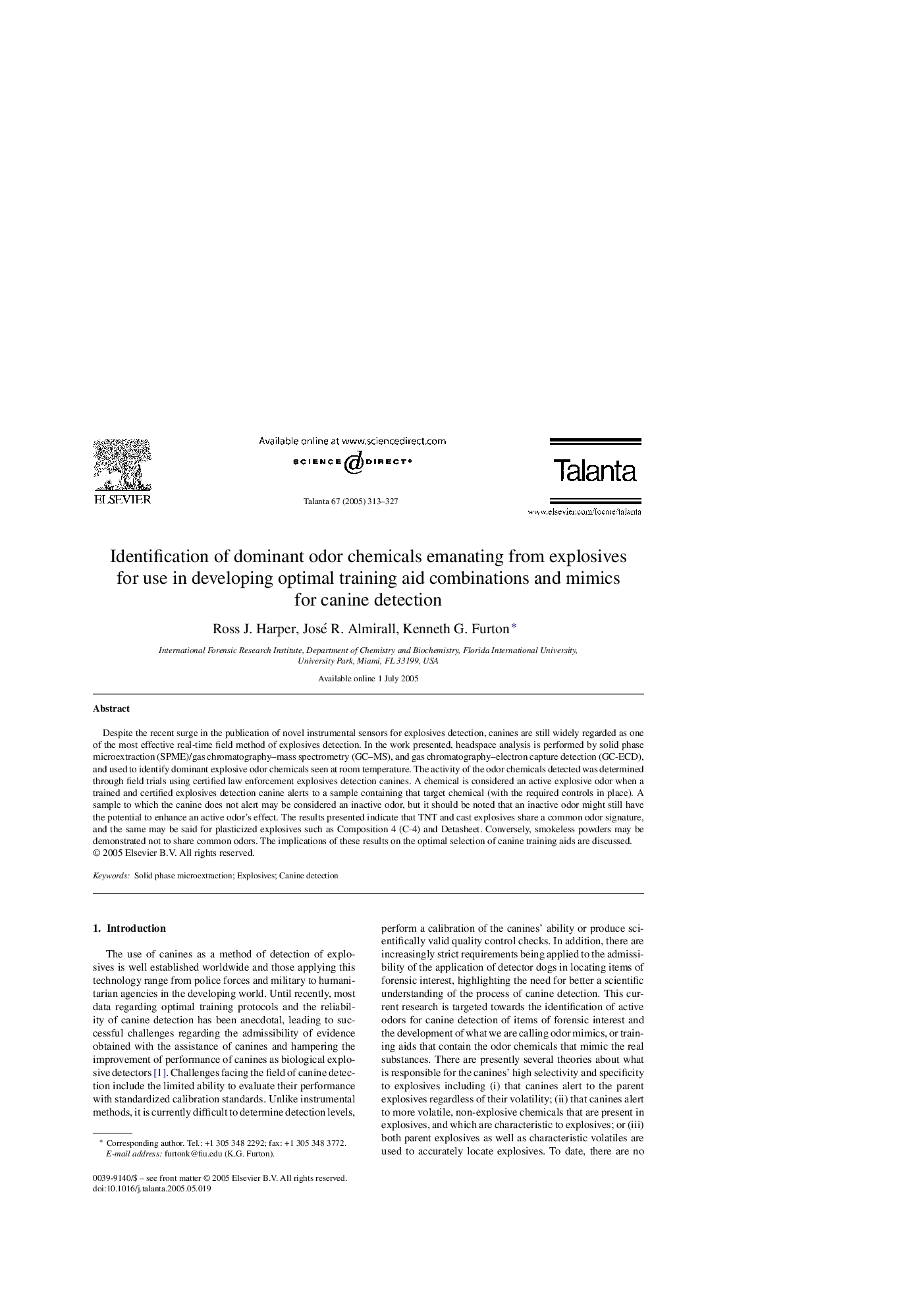| Article ID | Journal | Published Year | Pages | File Type |
|---|---|---|---|---|
| 10560742 | Talanta | 2005 | 15 Pages |
Abstract
Despite the recent surge in the publication of novel instrumental sensors for explosives detection, canines are still widely regarded as one of the most effective real-time field method of explosives detection. In the work presented, headspace analysis is performed by solid phase microextraction (SPME)/gas chromatography-mass spectrometry (GC-MS), and gas chromatography-electron capture detection (GC-ECD), and used to identify dominant explosive odor chemicals seen at room temperature. The activity of the odor chemicals detected was determined through field trials using certified law enforcement explosives detection canines. A chemical is considered an active explosive odor when a trained and certified explosives detection canine alerts to a sample containing that target chemical (with the required controls in place). A sample to which the canine does not alert may be considered an inactive odor, but it should be noted that an inactive odor might still have the potential to enhance an active odor's effect. The results presented indicate that TNT and cast explosives share a common odor signature, and the same may be said for plasticized explosives such as Composition 4 (C-4) and Detasheet. Conversely, smokeless powders may be demonstrated not to share common odors. The implications of these results on the optimal selection of canine training aids are discussed.
Related Topics
Physical Sciences and Engineering
Chemistry
Analytical Chemistry
Authors
Ross J. Harper, José R. Almirall, Kenneth G. Furton,
